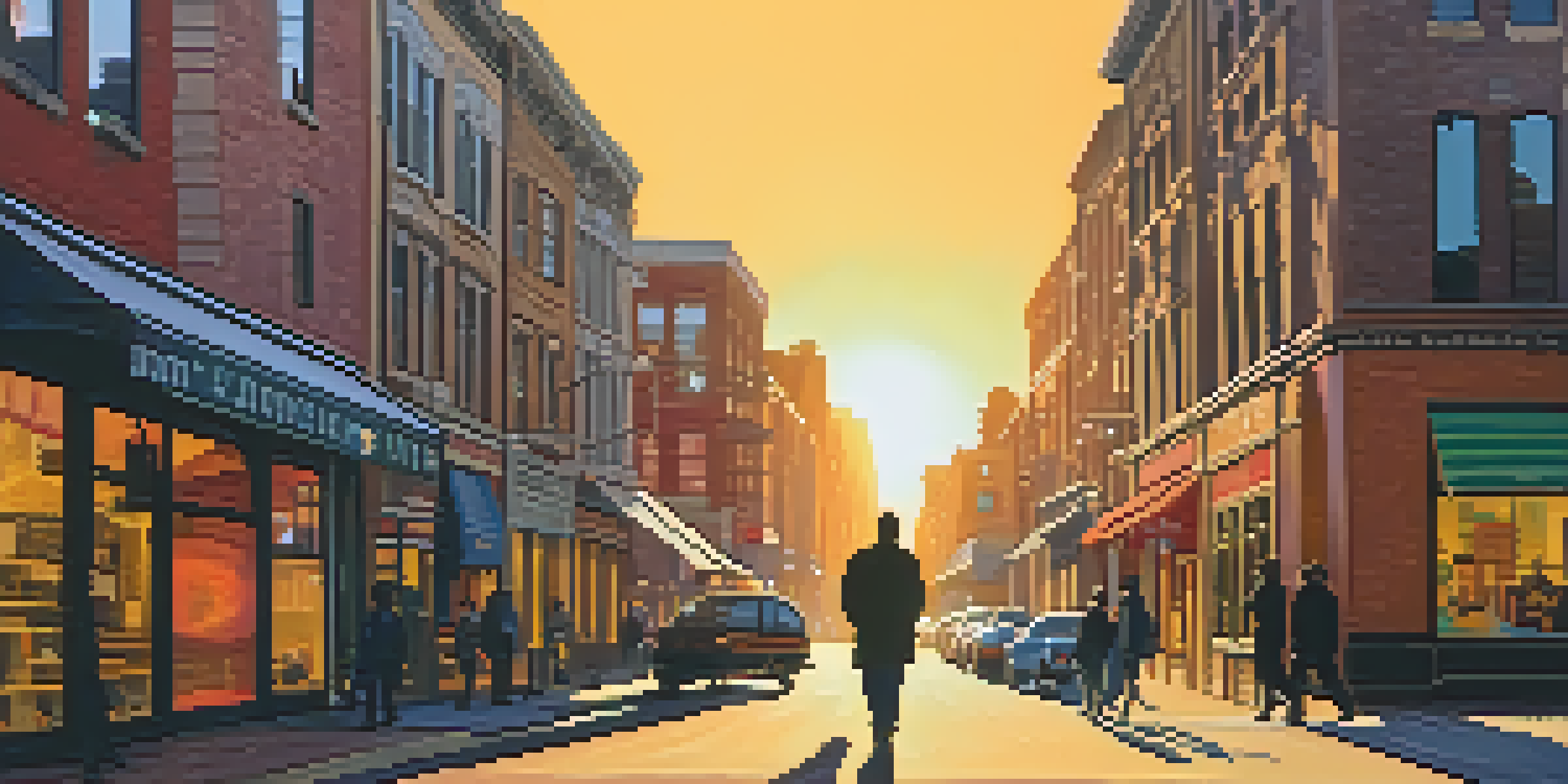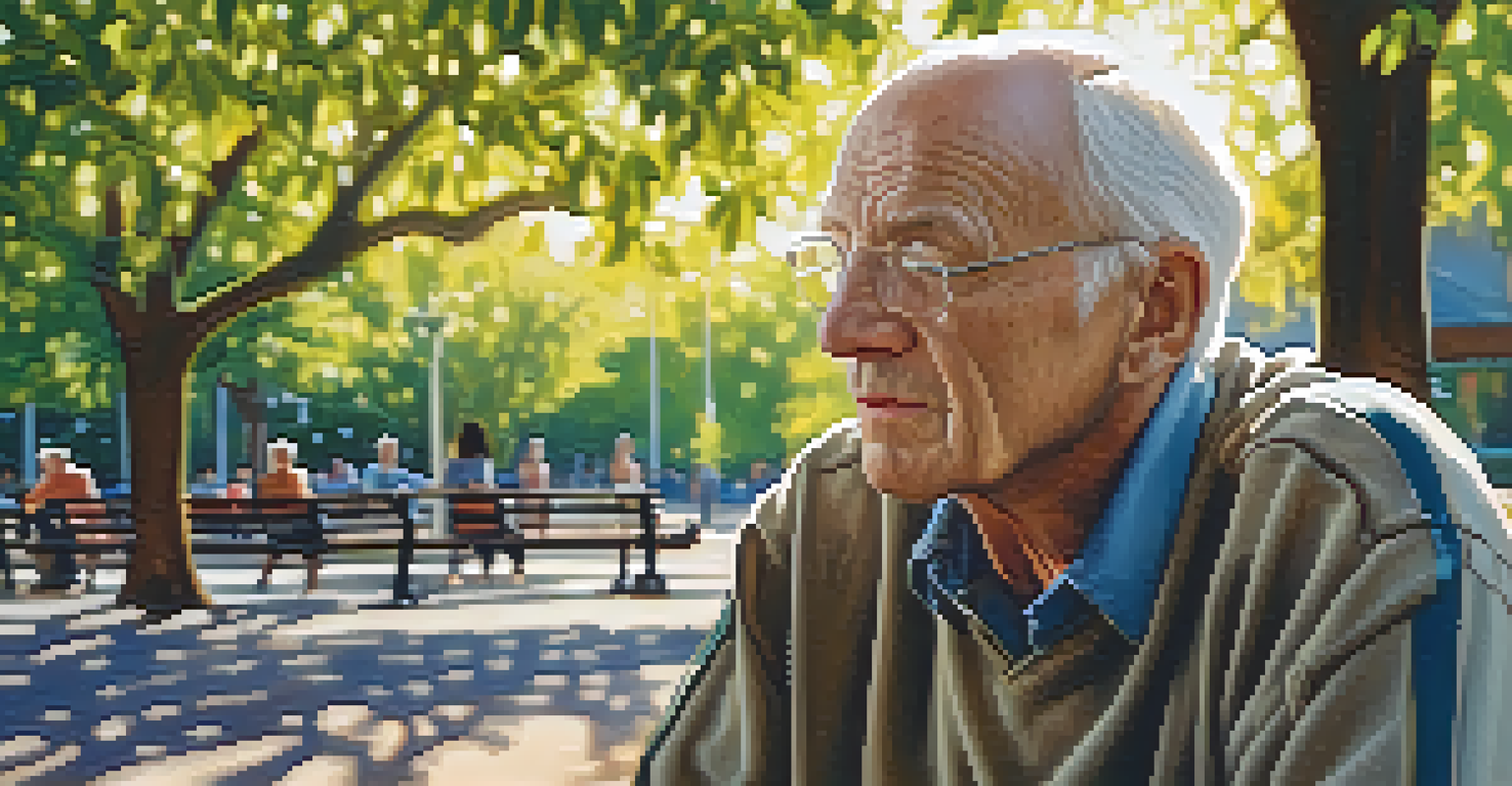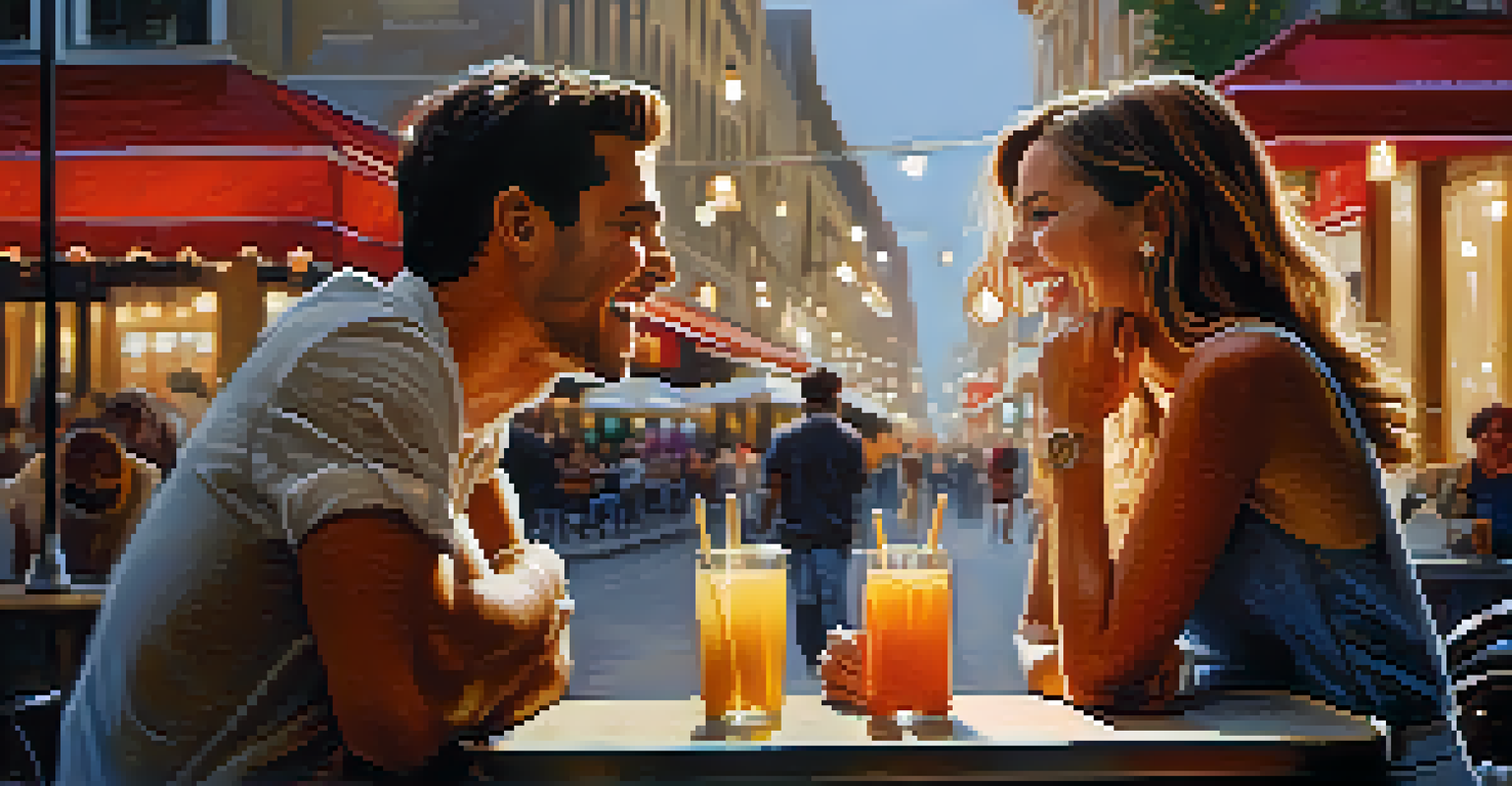Understanding the Aesthetic Principles of Street Photography

What is Street Photography and Its Aesthetic Value?
Street photography captures candid moments in public spaces, showcasing the rawness of everyday life. This genre thrives on spontaneity, where the unexpected often becomes the highlight of the shot. The aesthetic value lies in how these unfiltered moments reflect human emotions and interactions, often revealing deeper stories.
Street photography is about capturing the essence of life, the fleeting moments that tell a story without words.
Unlike posed photography, street photography invites viewers to engage with the scene, making them feel part of the moment. The beauty of this art form is in its ability to convey a narrative without any context, compelling the audience to interpret the image in their own way. This open-ended nature enhances its aesthetic allure.
In essence, street photography isn't just about capturing images; it's about encapsulating the essence of life in a frame. The aesthetic principles involved create a visual dialogue between the subject and the viewer, making each photograph a unique experience that resonates on different levels.
Composition: The Backbone of Street Photography
Composition is a crucial aspect of street photography, guiding how elements within a frame interact with one another. Techniques like the rule of thirds, leading lines, and framing help photographers create balanced and engaging images. A well-composed shot draws the viewer's eye and invites them to explore the photograph more deeply.

For instance, placing a subject off-center can create a sense of movement, while leading lines can guide the viewer’s gaze toward the main focal point. Additionally, foreground and background elements can add layers to the story being told. These compositional techniques not only enhance aesthetic appeal but also convey emotion and context.
Candid Moments Define Street Photography
Street photography thrives on capturing spontaneous, candid moments that reflect genuine human emotions and interactions.
Ultimately, mastering composition allows photographers to transform ordinary scenes into striking visual narratives. By carefully considering how each element fits together, street photographers can evoke feelings and provoke thoughts, making their work both aesthetically pleasing and impactful.
Light and Shadow: Creating Mood in Street Photography
Light is an essential component of photography, and in street photography, it plays a pivotal role in setting the mood. Natural light can create dramatic contrasts, highlighting certain elements while casting others in shadow. This interplay can evoke emotions, making the viewer feel the atmosphere of the moment.
The best images are those that tell a story, the ones that evoke emotion and connect us to the human experience.
For instance, shooting during golden hour, when the sun is low, bathes subjects in a warm, inviting glow, enhancing the overall aesthetic. Conversely, shooting in harsh midday light can create stark shadows that add tension and drama to an image. Understanding how to manipulate light can significantly elevate the emotional resonance of a photograph.
Moreover, shadows can become subjects in their own right, adding depth and intrigue. By embracing both light and shadow, street photographers can craft images that not only capture reality but also evoke a visceral response, inviting viewers to linger a little longer.
Color vs. Black and White: The Aesthetic Debate
The choice between color and black and white is a fundamental aesthetic decision in street photography. Color can convey vibrancy and energy, highlighting the richness of urban environments. It can evoke specific moods or feelings, making the scene feel more alive and dynamic.
On the other hand, black and white photography strips away distractions, allowing the viewer to focus on form, texture, and emotion. This timeless aesthetic can evoke nostalgia, creating a deeper connection to the subject matter. Many photographers find that this choice significantly alters the narrative conveyed in their images.
Composition Shapes the Narrative
Effective composition techniques guide the viewer’s eye and enhance the storytelling aspect of street photography.
Ultimately, the decision hinges on the story the photographer wishes to tell. Whether through the vividness of color or the simplicity of monochrome, each approach offers unique aesthetic qualities that can powerfully impact the viewer's experience.
Capturing Candid Moments: The Heart of Street Photography
At its core, street photography thrives on capturing candid moments that reveal the essence of human experience. These spontaneous interactions often tell stories that posed shots cannot convey. The beauty of candid photography lies in its authenticity, showcasing real emotions and genuine moments.
For example, a fleeting expression on a stranger's face can encapsulate joy, sadness, or contemplation, inviting the viewer to ponder the narrative behind it. This unpredictability is what makes street photography exciting; it’s about being in the right place at the right time and having the instinct to capture the moment.
Moreover, candid moments can create a sense of connection between the viewer and the subject, fostering empathy and understanding. By focusing on the spontaneity of life, street photographers can create images that resonate deeply, making the viewer reflect on their own experiences.
The Role of Context in Street Photography Aesthetics
Context plays a vital role in street photography, influencing how images are perceived. The setting, background, and surroundings can provide essential clues that enhance the narrative of a photograph. By capturing the broader environment, photographers can create a richer story and deepen the viewer's engagement.
For instance, a solitary figure in a bustling city can evoke feelings of loneliness amidst chaos, while a group of friends laughing in a park can convey joy and connection. The context helps frame the photograph, guiding the viewer's interpretation and emotional response. It’s about more than just the subject; it’s about how they relate to their surroundings.
Light and Context Create Mood
The interplay of light and the surrounding context significantly influences the emotional impact and narrative depth of street photographs.
By thoughtfully considering context, street photographers can elevate their work from mere visuals to compelling narratives. This deeper understanding of the environment not only enriches the aesthetic but also allows for a more profound exploration of human experiences.
Emotion and Storytelling: The Aesthetic Goals of Street Photography
Street photography is not just about aesthetics; it's also about evoking emotion and telling stories. Each photograph captures a moment that resonates with viewers, encouraging them to connect with the subject on a personal level. The ability to convey emotion is what transforms an ordinary scene into a powerful image.
For example, a photograph of a child playing in the rain can evoke nostalgia and joy, while an image of a couple sharing a quiet moment can highlight intimacy and love. These emotions are universal, allowing viewers to relate to the experiences depicted, which is a core goal of street photography.

Ultimately, the aesthetic principles of street photography serve to enhance storytelling. By capturing genuine emotions and moments, photographers create images that linger in the minds of viewers, inviting them to reflect on their own lives and relationships.
Final Thoughts: The Aesthetic Journey of Street Photography
Understanding the aesthetic principles of street photography is essential for anyone looking to delve into this captivating genre. From composition and light to emotion and context, each element contributes to the overall impact of a photograph. Embracing these principles allows photographers to craft images that are not only visually striking but also rich in narrative.
As you explore street photography, remember that it’s about more than just technique; it’s about connecting with the world around you. Each click of the shutter is an opportunity to capture a fleeting moment that may never happen again. This sense of urgency and spontaneity is what makes street photography so exhilarating.
In conclusion, the journey of street photography is one of discovery, creativity, and expression. By honing your understanding of these aesthetic principles, you can elevate your street photography, inviting viewers to see the world through your lens and encouraging them to find beauty in the everyday.